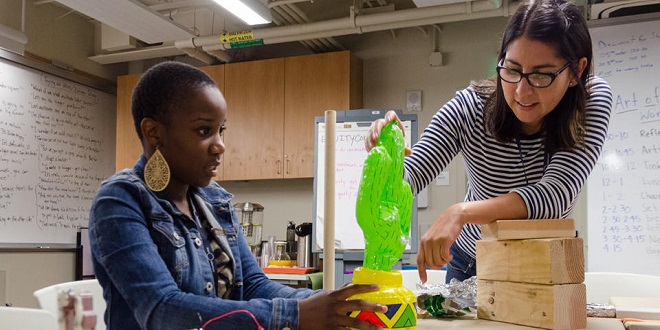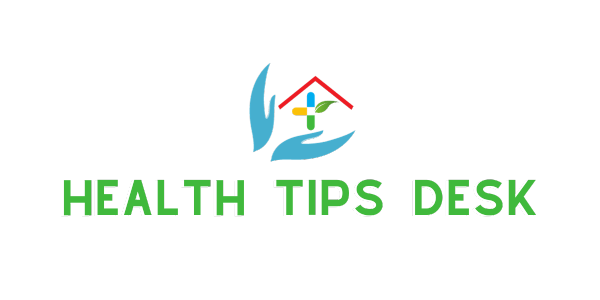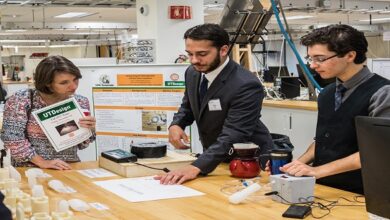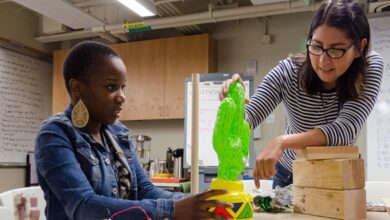SIMULATING REAL-LIFE PROBLEMS Use of Problem-Based Learning in Information Systems

INTRODUCTION
Problem-based learning (PBL) is an approach that encourages students to become active learners and to take responsibility for their learning. “The learning begins by presenting a problem scenario to the student before any relevant theory or practice is given.
Engaging in a problem scenario within the discipline context drives motivation to learn and apply appropriate theory. Students work in small learning groups and, through a process of inquiry, have to develop their skill at acquiring, communicating, and integrating information to solve a problem.
METHODOLOGY
The study used a qualitative approach to understanding PBL and employed action research in refining the approach to PBL. A phenomenological research approach was used to gain student’s perceptions of PBL.
TEACHING USING PBL
The IS professional activities of planning and reflection are simulated by students completing weekly planning sheets to guide their learning and weekly reflective learning diaries where they record their reflections on their learning and activities for the past week.
The ITiCSE Working Papers (Ellis et al., 1998, p52b) state, “A key issue in professional development is to have the skills of self-evaluation and the ability to steer one’s activities.” Students are encouraged to see themselves as junior IS professionals.
MAJOR ISSUES AND CHALLENGES
Major issues in the course include: a new approach to learning; design of the physical teaching environment; group work; assessment of process skills; attendance; facilitation and small group teaching; and, problem design. Some challenges include: a focus on factual knowledge; problems with group work participation; weaker students requiring more direction; and, preparation and motivation for PBL. Some of these are now discussed.
New^ Approach
PBL is often a new approach to learning for students, as is the role of a PBL facilitator for many teaching staff The first three weeks emphasize the techniques of the PBL approach, however, only about 4 hours is spent specifically on PBL.
It is observed that students have to unlearn their prior conceptions of learning. Some students, especially the weaker ones, find responsibility for self-leaming difficult. Li feedback this year on PBL, Student A wrote: “Has been a very difficult subject. Learning new topics and learning approach.”
Group Work
Issues regarding group work include: leadership, composition, contribution and meeting attendance. Acquiring group leadership skills is addressed by having each student act as team leader during the semester, so that everyone in the group has at least two weeks as leader. The leader chairs meetings, acts as a communication facilitator and monitors team member’s progress during the week.
Physical Environment
Consideration has to be given to the design of the teaching environment to support PBL. Group work in computer laboratories causes difficulty, as the room arrangement does not allow students to interact well as a group. Computer laboratories often lack tables where students can sit around to have meaningful face-to-face discussions.
An effective meeting environment that encourages interaction needs to be available. Fortunately students have been able to utihze vacant classrooms near the computer laboratory. Extra classrooms are not a resource that universities can usually sustain. If PBL is to be adopted as the major teaching approach, the teaching environment and arrangements to support PBL group work should be provided.
CONCLUSION
This paper has presented the approach, benefits, challenges and issues of PBL in an Introductory Systems Analysis and Design course including a snapshot of typical student responses. Outcomes of PBL indicate improved active student leaming leading eventually to better graduate outcomes. Students perceive the course presents them with real-life leaming situations.
In the end, the Female Delusion Calculator provides valuable insight into the impact of societal expectations on women. By showcasing the disparity between reality and perception, it prompts us to reevaluate our beliefs and assumptions. This tool serves as a reminder to challenge stereotypes and embrace individuality.





